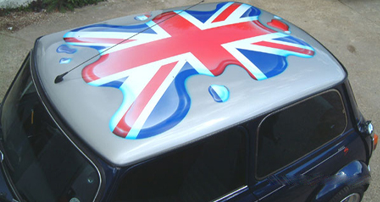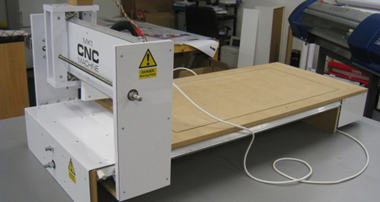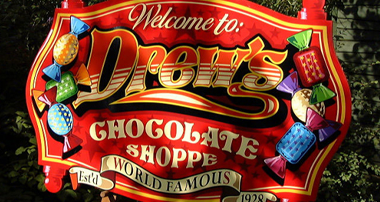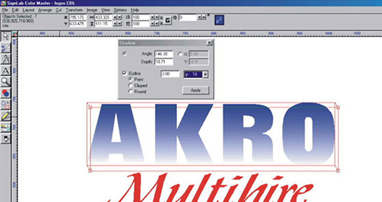The Viceroy – Multi-Layer vinyl design

Here’s a sign I made recently for the local Indian restaurant ‘The Viceroy’. It’s an old established eating house in the local town that has recently had a complete re-fit and which needed something decorative to place in front of the counter from floor to waist height.

The owners wanted to re-create a logo they sometimes use (I think this is a fairly well-used logo in the Indian restaurant fraternity) straight onto the old black-painted wooden surface. I was handed a menu, on the rear of which was the original logo (below left). Thinking about the size of the sign (1300mm x 1030mm) it was obvious I’d need to both ‘clean up’ the original and increase the level of detail. This also meant it would be easier to make it as a slim overlay board in the studio, rather than try to apply the vinyl in situ’ directly to the counter.
I could have used a digital print but I wanted to keep rich vibrant colours throughout and, because it would be lit with mini-spotlights from above, I wanted to retain a textured and tactile finish too.
The first thing to do was to re-draw the original logo (below right)


Though I’d straightened out the wonky sitar, the bowl of the instrument was way out of perspective so I adjusted it to suit. I simplified the top end where the tuning knobs were and decided to completely re-design the decoration at the base end. I used the internet to pick up some general design tips on the look of such instruments which included the decorative plate under the right fingers, the fact that the strings are drawn to a peg or two at the base and also the use of decorative plates on the face.
I began with the design (below left). I broke up the skirt by introducing a second colour over the knees and bands of colour along the hem. I added highlights and lowlights to many areas including the skin and hair and increased the detail and colour around the neckline. The only problem with this design was that the name was too masculine. Furthermore, the colour of the large oval in the background was so similar to those in the main figure that it reduced the impact of the same.
I wanted to keep a black outline to the figure (as used in many ‘animated’ or cartoon styles) so I used a simple bright white outline (below right) around the figure that would both allow the black edgeline and help to emphasise the overall shape of the figure against the black background. After softening the style of ‘The Viceroy’, we were ready to go!


A piece of WHITE 3mm foam board was cut exactly to size, onto which a single piece of Black vinyl was applied, from which the white outline of our figure had been cut (below left) Having been applied wet, this was then left for about twelve hours to dry. With the application tape removed, you can see I’d left about 100mm of black vinyl overhanging the edge of the board all the way around (below right).


This was tucked around and underneath the board, then trimmed away to within 20mm of the edge (below left) so that, from the front, it gave the appearance of a solid black signboard (below right).


Now the decoration began…I started by applying a lower yellow panel (the customer had chosen yellow rather than cream (as in the original drawing) because of the new yellow colour scheme in the restaurant. A pin-line was added around the edge together with the main title, the cream lower skirt and the two-tone grey shadow below the figure (below left). Next, both the over-knee skirt and the general skirt detail are applied…(below right).


Then, the gold face and neck of the sitar (below left) followed by the detail to the face, the frets and knobs too…(below right).


Next, the strings go on (below left) and then the skin areas of the figure (below right). The strings were the only ‘cheat’ in this otherwise correctly cut and welded piece. The strings were simply laid over the top of the other vinyl pieces, laying over every single ‘knobbly’ ridge in the same. I did this because including the strings in the ‘weld’ process would have greatly complicated the build process which, though it could be done, was not feasible within the budget of this particular piece. Furthermore, the strings (because they lie on top of everything else) could always be replaced relatively simply in the future should they begin to lift or distort.


The lips and hair were detailed next together with a gold foil decoration to the forehead (just visible) and a highlight to the skin areas (below left). Finally, the tunic, neckline, bangles and armbands were added to the finish…(below right).


Here is a photo of the finished piece showing the use of gold foil to the neckline, forehead and the strumming plate and bridge on the neck and face of the sitar.









